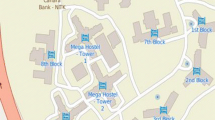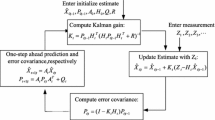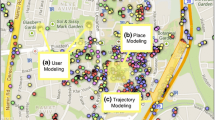Abstract
In recent years, the role of vehicular networks has become increasingly important for the future of Intelligent Transportation Systems, as they are useful for providing safety, assistance to drivers, and traffic control management. Many vehicular network applications such as routing, mobility management, service discovery, and collision avoidance protocols would benefit from possessing vehicles’ prior location information to improve their performance. However, the rapid mobility of vehicles and the degree of error in positioning systems create a challenging problem regarding the accuracy and efficiency of any location prediction-based model for vehicular networks. Therefore, a number of location prediction techniques has been proposed in the literature. In this paper, we study and compare the accuracy and effectiveness of the following location-based movement prediction models: Kalman filter, Extended Kalman filter (EKF), Unscented Kalman filter (UKF), and Particle filter for vehicular networks. We compare the performances of these prediction techniques with respect to different mobility models, and provide some insights on their capabilities and limitations. Our results indicate that Particle filter outperforms all other predictors with respect to location error. In addition, EKF and UKF demonstrated an increase in efficiency of more than 50% when additional measurements input were integrated with the predictors.












Similar content being viewed by others
References
Boukerche, A., Oliveira, H., Nakamura, E., & Loureiro, A. (2008). Vehicular ad hoc networks: a new challenge for localization-based systems. Computer Communications, 31, 28382849.
Tong Liu, P., Bahl, P., & Chlamtac, I. (1998). Mobility modeling, location tracking, and trajectory prediction in wireless ATM networks. IEEE Journal on Selected Areas in Communications, 16(6), 922–936.
Boukerche, A. (2008). Algorithms and protocols for wireless sensor networks. Hoboken: Wiley-IEEE Press.
Krakiwsky, E. J., Harris, C. B., & Wong, R. V. C. (1988). A Kalman filter for integrating dead reckoning, map matching and GPS positioning. Position location and navigation symposium, record. navigation into the 21st century. IEEE PLANS ’88. IEEE, 1988, pp. 39–46.
Parkinson, B., & Spilker, J. (1996). Global positioning system: Theory and applications. Reston: AIAA.
Kalman, R. E. (1960). A new approach to linear filtering and prediction problems. Transactions of the ASME Journal of Basic Engineering (Series D), 82, 35–45.
Julier, S. J., Uhlmann, J. K. (1997). New extension of the Kalman filter to nonlinear systems. In Proceedings of the SPIE 3068, signal processing, sensor fusion, and target recognition VI, Vol. 182.
Julier, S. J., & Uhlmann, J. K. (2004). Unscented filtering and nonlinear estimation. Proceedigs of the IEEE, 92(3), 401–422.
Gordon, N. J., Salmond, D. J., & Smith, A. F. M. (1993). ”Novel approach to nonlinear/non-Gaussian Bayesian state estimation. IEE Proceedings of the F-Radar and Signal Processing, 140(2), 107–113.
Chen, Z. (2003). Bayesian filtering: from Kalman filters to particle filters, and beyond. Statistics, 182(1), 1–69.
Chellapa, R., Jennings, A., & Shenoy, N. (2003). A comparative study of mobility prediction in fixed wireless networks and mobile ad hoc networks. In IEEE international conference on communications, 2003. ICC ’03, (Vol. 2, pp. 891–895).
Magnano, A., Fei, X., & Boukerche, A. (2015). Predictive mobile IP handover for vehicular networks. IEEE 40th conference on local computer networks (LCN) , pp. 338–346.
Ueki, J., Mori, J., Nakamura, Y., Horii, Y., Okada, H. (2004). Development of vehicular-collision avoidance support system by inter-vehicle communications. In Vehicular technology conference, VTC 2004-Spring, IEEE 59th (Vol. 5, pp. 2940–2945).
Fox, D., Hightower, J., Liao, L., Schulz, D., & Borriello, G. (2003). Bayesian filtering for location estimation. IEEE Pervasive Computing, 2(3), 24–33.
Harri, J., & Bonnet, C., & Filali, F. (2007). The challenges of predicting mobility. Research report RR-06-171.
Jia, X., Wu, Z. L., Guan, H. (2016). The target vehicle movement state estimation method with radar based on Kalman filtering algorithm. In Applied mechanics and materials, 2013, (Vols. 347–350, pp. 638–642). International Journal of Distributed Sensor Networks, Vol. 12, Issue 2.
Feng, H., Liu, C., Shu, Y., & Yang, O. W. (2015). Location prediction of vehicles in VANETs using a Kalman filter. Wireless Personal Communications, 80(2), 543–559.
Magnano, A., Fei, X., & Boukerche, A. (2015). Movement prediction in vehicular networks. IEEE Global Communications Conference (GLOBECOM), 2015, 1–6.
Namboodiri, V., & Gao, L. (2007). Prediction-based routing for vehicular Ad Hoc networks. IEEE Transactions on Vehicular Technology, 56(4), 2332–2345.
Tzvetkov, V. (2008). SIP registration optimization in mobile environments using extended Kalman filter. In Third International Conference on Communications and Networking, 2008, pp. 106–111.
Vosselman, G., Knecht, J. de. (1995). Road tracing by profile matching and Kalman filtering. In A. Gruen (Ed.), Automatic extraction of man-made objects from aerial and space images, pp 265–274.
Merah, A. F., Samarah, S., & Boukerche, A. (2012). Vehicular movement patterns: A prediction-based route discovery technique for VANETs. IEEE international conference on communications (ICC), 2012, pp. 5291–5295.
Jia, X., Wu, Z. L., & Guan, H. (2013). The Target vehicle movement state estimation method with radar based on Kalman filtering algorithm. Applied Mechanics and Materials, 347–350, 638–642.
Pascale, A., Nicoli, M., & Spagnolini, U. (2014). Cooperative Bayesian estimation of vehicular traffic in large-scale networks. IEEE Transactions on Intelligent Transportation Systems, 15(5), 2074–2088.
Jeung, H., Yiu, M. L., Zhou, X., & Jensen, C. S. (2010). Path prediction and predictive range querying in road network databases. The VLDB Journal, 19(4), 585–602.
Bavdekar, V. A., Deshpande, A. P., & Patwardhan, S. C. (2011). Identification of process and measurement noise covariance for state and parameter estimation using extended Kalman filter. Journal of Process Control, 21(4), 585601.
Julier, S. J., & Uhlmann, J. K. (1997). A new extension of the kalman filter to nonlinear systems. In: Proceedigs of AeroSense: The 11th international symposium on aerospace/defence sensing, simulation and controls.
Srkk, S. (2013). Bayesian filtering and smoothing. Cambridge: Cambridge University Press.
Pitt, M., & Shephard, N. (1999). Filtering via simulation: Auxiliary particle filters. Journal of the American Statistical Association, 94(446), 590–599.
Liu, J., & Chen, R. (1995). Blind deconvolution via sequential imputation. American Statistical Association, 90, 567–76.
Kitagawa, G. (1996). Monte Carlo filter and smoother for non-Gaussian non- linear state space models. Journal of Computational and Graphical Statistics, 5(1), 125.
Liuand, J. S., & Chen, R. (1998). Sequential Monte Carlo methods for dynamical systems . Journal of the American Statistical Association, 93, 1032–44.
Vehicular mobility trace of the city of Cologne, Germany. http://kolntrace.project.citi-lab.fr/.
Author information
Authors and Affiliations
Corresponding author
Additional information
This work was partially supported by NSERC, NSERC CREATE-TRANSIT and Canada Research Chair Programs.
Rights and permissions
About this article
Cite this article
Aljeri, N., Boukerche, A. Movement prediction models for vehicular networks: an empirical analysis. Wireless Netw 25, 1505–1518 (2019). https://doi.org/10.1007/s11276-017-1607-x
Published:
Issue Date:
DOI: https://doi.org/10.1007/s11276-017-1607-x




